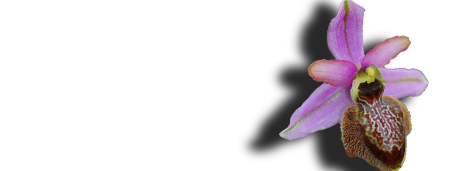

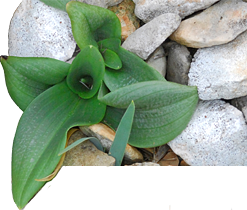

Landscape of the Corbières maritimes - Roquefort-des-Corbières
The Corbières massif is a natural region in Occitanie which extends to the north-east of the Pyrénées-Orientales and to the east of the Aude behind the plain and the coastal ponds. Its structure, tormented by a complex geological history, offers landscapes of valleys and defiles between ridges and disorderly plateaus. The highest point in the Corbières is the peak of Bugarach with an altitude of 1231 m. The other important peaks are the Serre de Bec (1037 m), the Pech de Fraysse (907 m) and the mountain of Alaric (600 m).
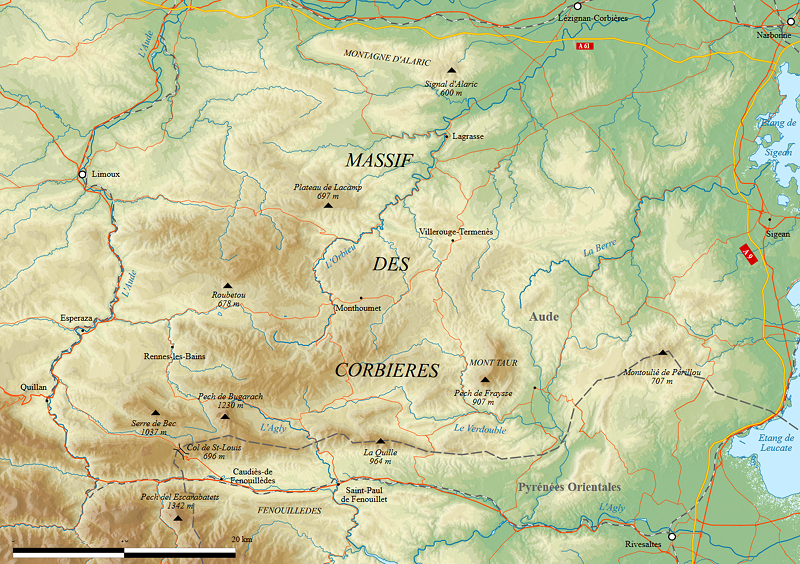
Location map
This massif, with limestone and schist soils, is influenced by the Mediterranean climate. To the east, the foothills which advance towards the sea form a sort of natural barrier with dry and arid slopes, covered with a poor and low scrubland contrasting with the valleys cultivated with vineyards. In its extension to the south, the maritime Corbières present a succession of "pechs", small plateaus and valleys.
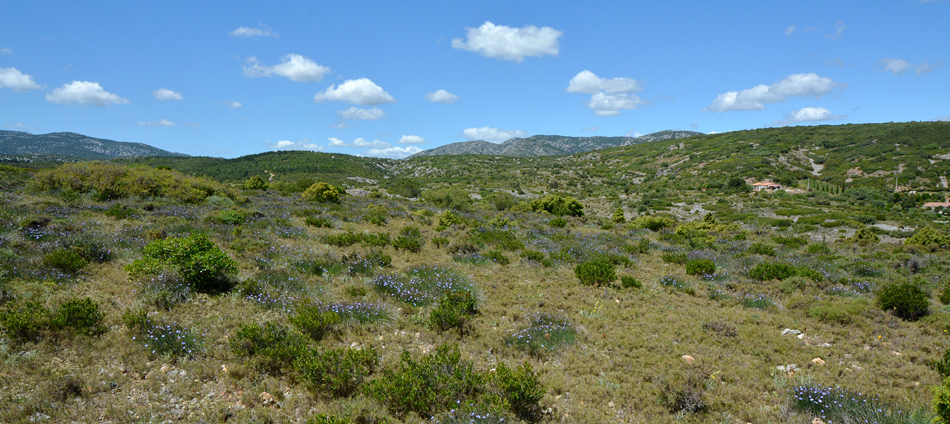
Landscape of the maritime Corbières near Treilles
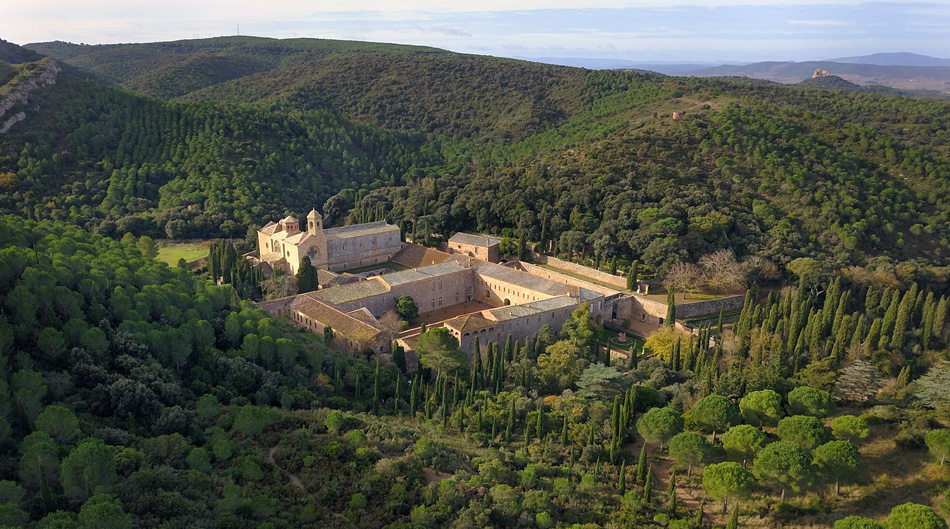
Fontfroide Abbey in the eastern Corbières
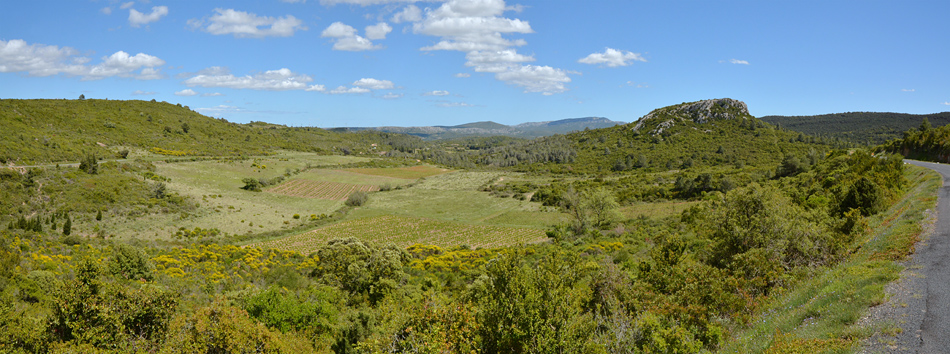
Landscape of the eastern Corbières
The plateaus and valleys from Villerouge-Termenès to Fontjoucouse, in the central Corbières, present scarcely wooded landscapes, still wine-growing, but with less marked reliefs forming small plateaus. As for the Orbieu valley, around Lagrasse and Saint-Martin-des-Puits, it is marked by very dry slopes covered with meager garrigue and a cultivated background.
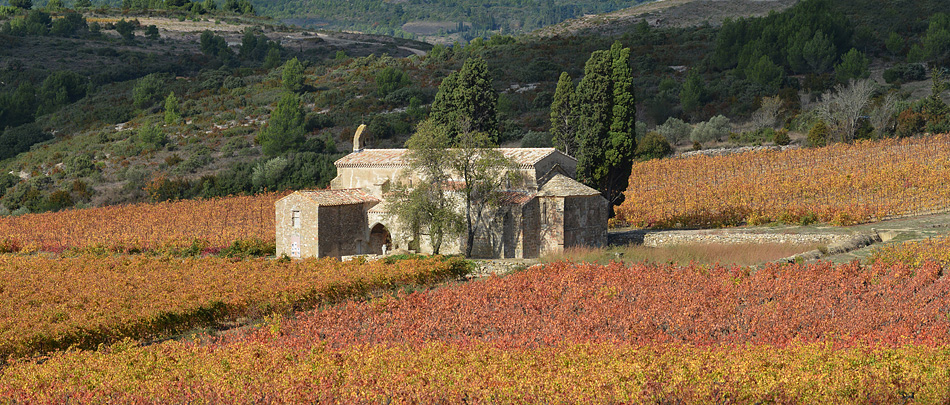
The chapel of Notre-Dame de l'Aire (13th century) in the heart of the Corbières vineyards
The corbières are home to a diverse flora with around sixty species of orchids.
To discover them, just walk along the roadsides or the dry lawns in the surroundings of Bugarach, Saint-Louis-et-Parahou, Talairan, Arquettes-en-Val, Saint-Paul de Fenouillet, Cucugnan, Caunette-sur- Lauquet, Bouisse, the Col de Taurize and many other places.
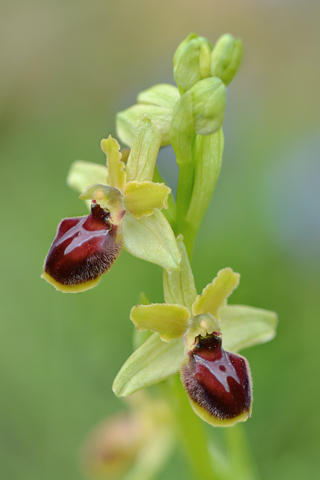 |
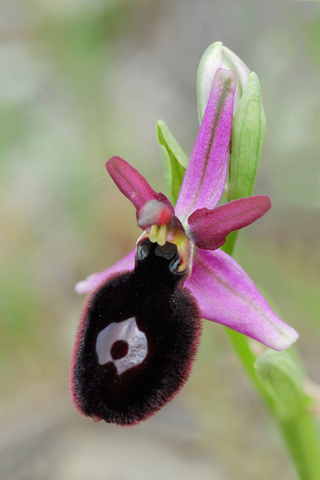 |
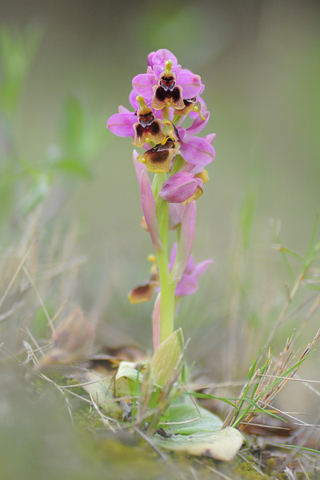 |
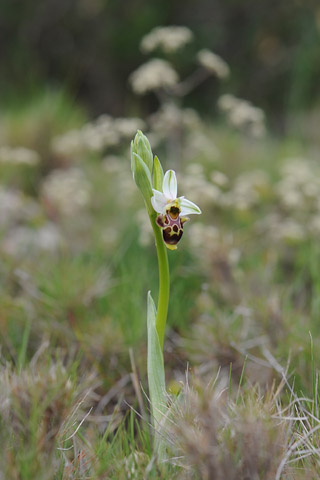 |
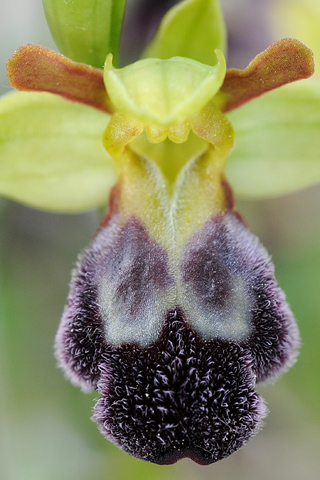 |
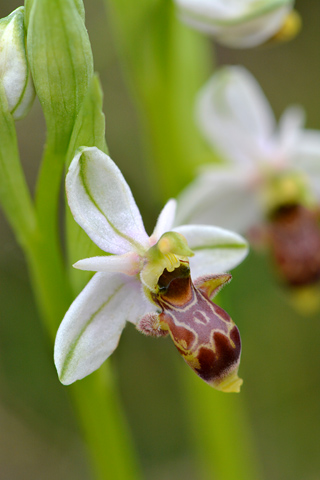 |
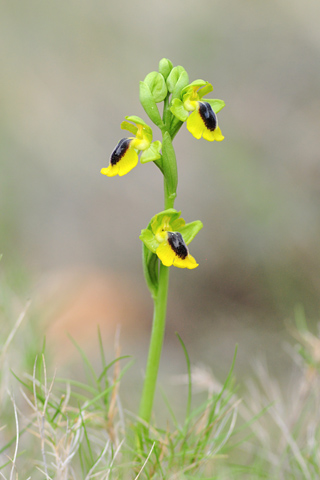 |
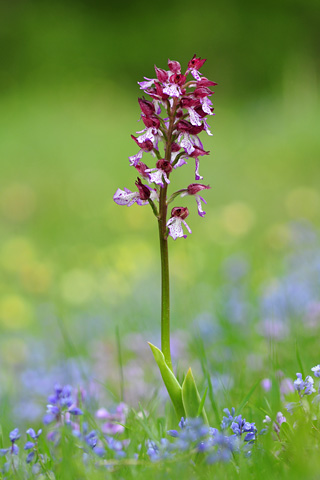 |
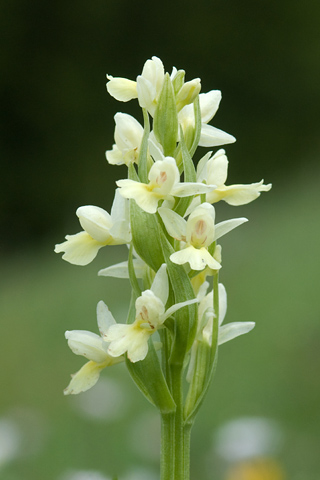 |
Some native orchids of the Corbières (the names of the species appear when you pass the pointer over the photos)
Above Talairan, the "Orchid trail" is announced by a large sign on the D23. This circuit along the vineyards of the Serres-Mazard estate is enhanced by 16 desks and thematic panels. The playful and informative walk offers a "garrigue tasting" which allows you to see a sample of native orchids, including the emblematic Ophrys magniflora.
The trail is extended by the "path of the planets", a small course of 250 m which reveals the mysteries of our solar system thanks to technical sheets produced by school children.
If you are a wine and nature lover, do not miss a visit to the Saint Damien cellar in Talairan where the owner will make you taste his excellent wines and will tell you with passion the history of his native land of Corbières.
 |
 |

The labels of some vintages are illustrated with wild orchids
In addition to orchids, this area is home to many other Mediterranean plants such as the Southern Tulip, Rosy Garlic or Small Pheasant's Eye
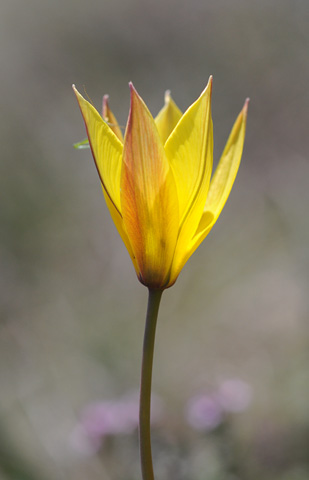 |
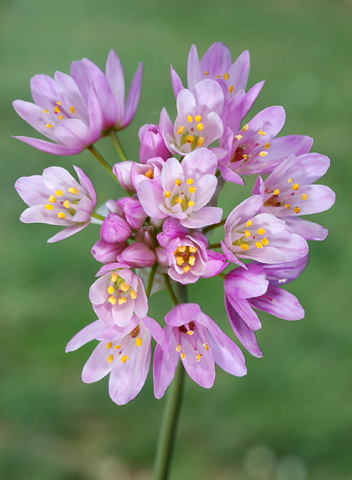 |
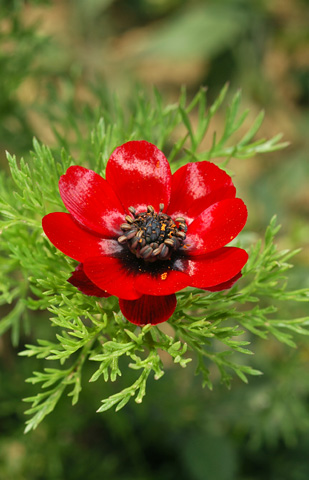 |
A few km away, the medieval city of Lagrasse is ranked among the most beautiful villages in France. The history of the village merges with that of the abbey Sainte-Marie which was founded under Charlemagne in 779 and which is one of the most beautiful architectural treasures of the Aude.
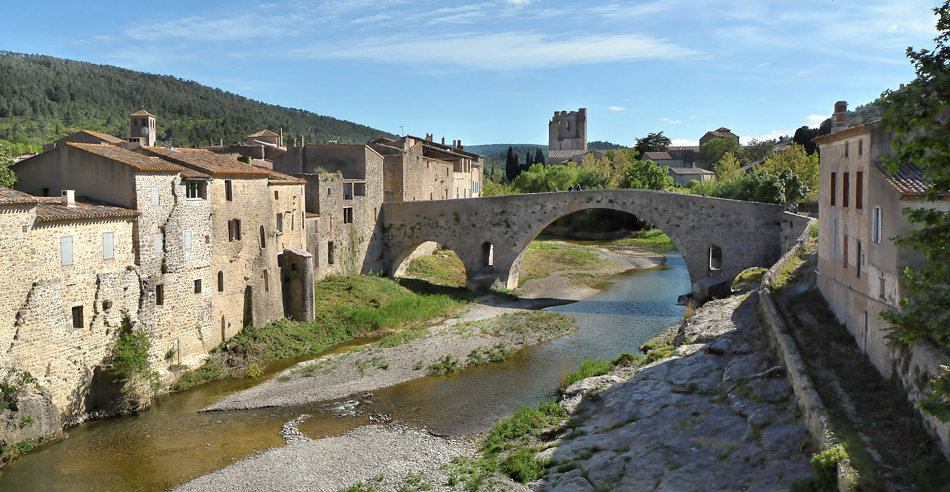
In a landscape of vineyards and hills, Lagrasse is crossed by the Orbieu, spanned by a bridge connecting the village and its old 14th century halls to its abbey
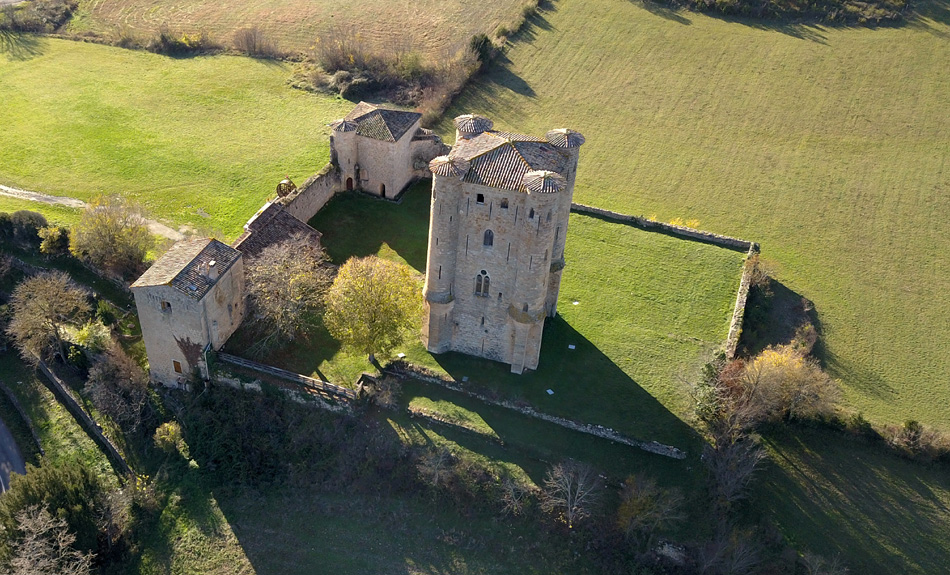
The castle of Arques is a masterpiece of medieval Gothic architecture.
To the south of the Aude, the Hautes-Corbières offer wide and mountainous landscapes, with important reliefs, wide valleys where the vine gives way to meadows and wooded areas.
The Pech of Bugarach, formerly the Pech of Thauze, dominates the Corbières at an altitude of 1231 m. This imposing summit is divided between the communes of Bugarach to the west and Camps-sur-l'Agly to the east. The surroundings of the peak are home to an exceptional floristic diversity made up of associations of oaks, beeches, moors and lawns rich in orchids. The lands towards the Linas Pass, or towards St. Louis-et-Parahou are areas suitable for remarkable species such as Cephalanthera damasonium, Neotinea conica, Ophrys vasconica or Ophrys catalaunica. Ophrys speculum also made its home on the southern foothills of the Pique Grosse.
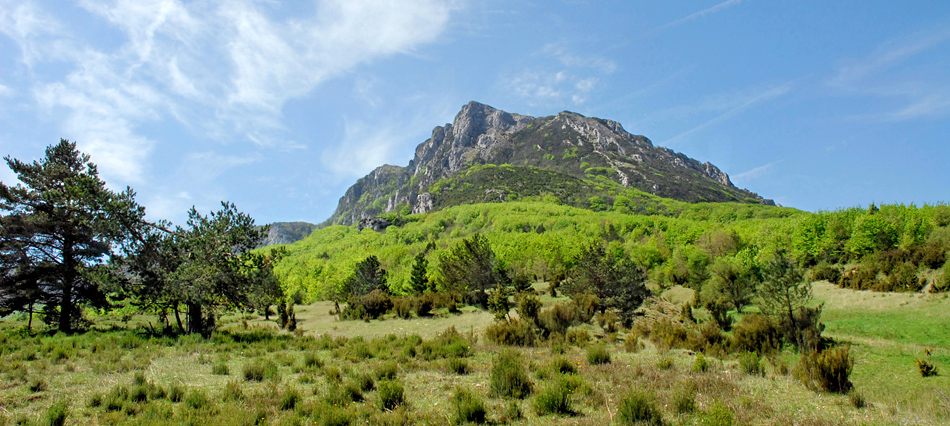
The Pic de Bugarach (1230 m) from the Plégadous
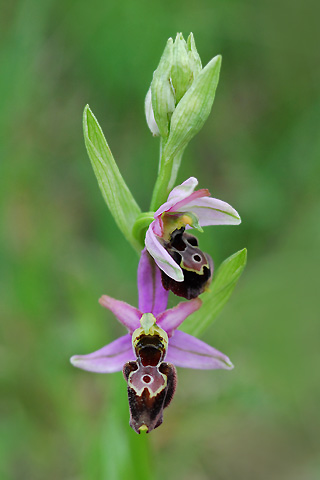 |
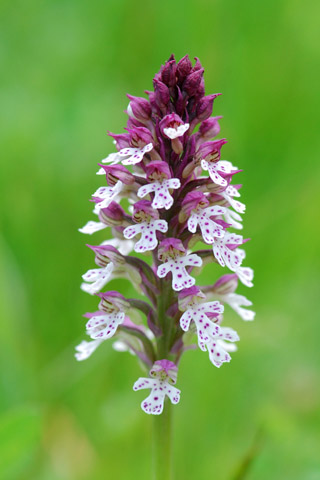 |
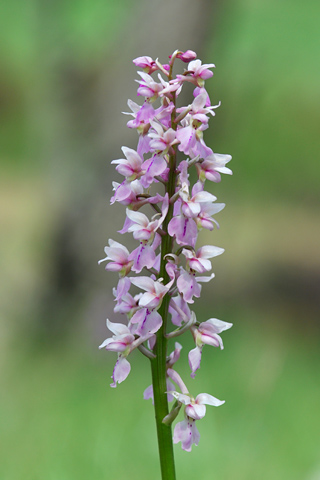 |
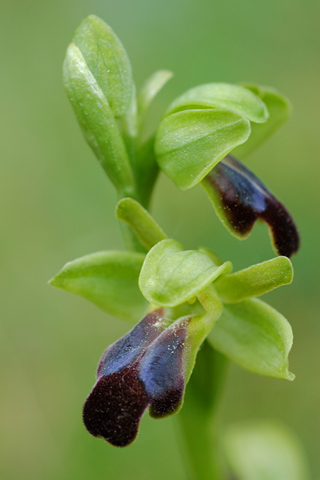 |
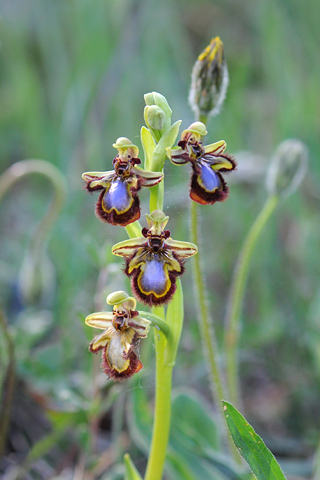 |
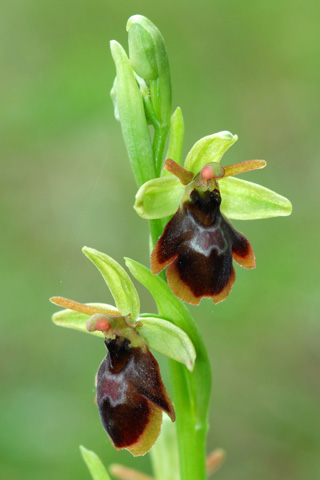 |
Some species observed in Bugarach (the names of the species appear when you pass the pointer over the photos)

Pasture in the area of Saint-Louis-et-Parahou
Near the village of Bouisse, the reliefs with rounded peaks form pastures with the grandiose peaks of the Hautes-Corbières and the Pyrenees Mountains as a backdrop.

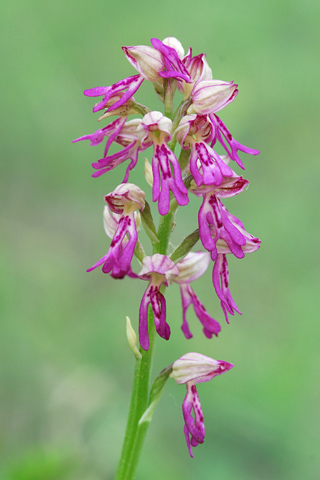 |
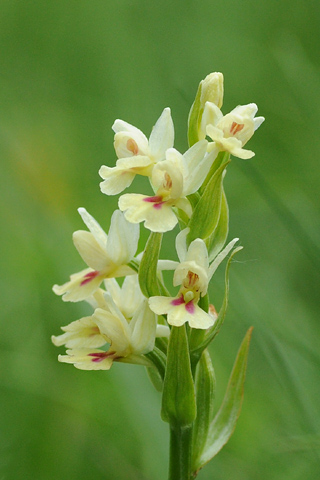 |
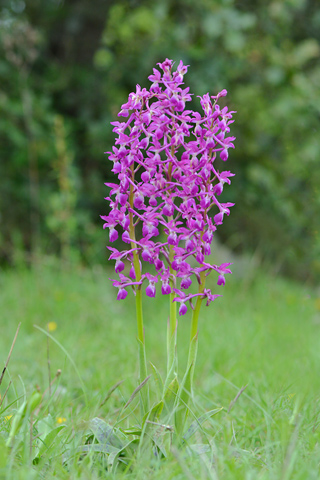 |
The peak of Bugarach from Les Eclauzes
Or. anthropophora × purpurea, Dact. insularis f. bartonii, Orchis mascula
To the south-east, near Cucugnan, the valleys are dominated by the silhouettes of limestone cliffs and imposing Cathar castles such as those of Quéribus and Peyrepertuse. Downstream from the village of Padern, the Verdouble river flows through the limestone of the Tauch mountain, creating a site with magnificent gorges.
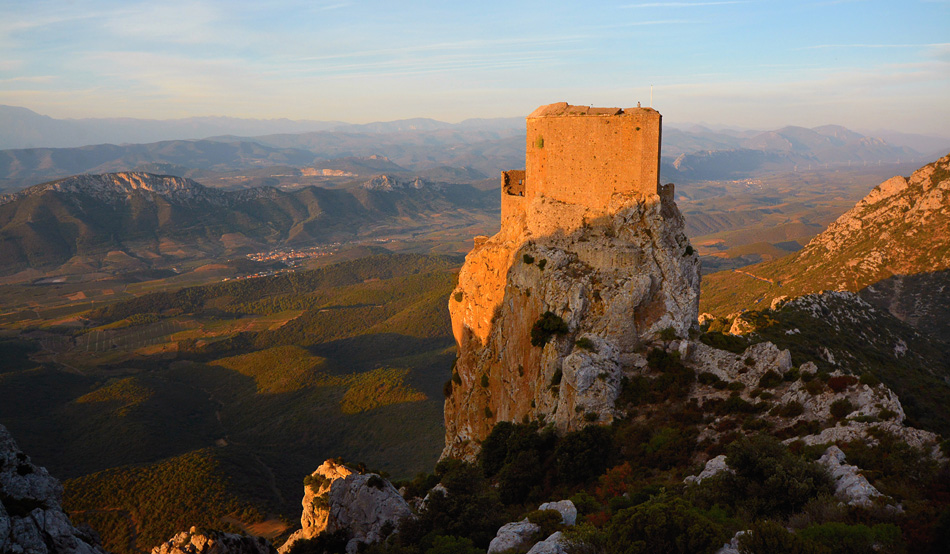
The Cathar castle of Quéribus, on the border between Aude and Pyrénées Orientales, offers an impressive panorama of the region of the Fenouillèdes
In the immediate vicinity of the castle of Quéribus, it is possible to see the Orchis olbiensis in the company of Op. lutea and Op. exaltata subsp. marzuola
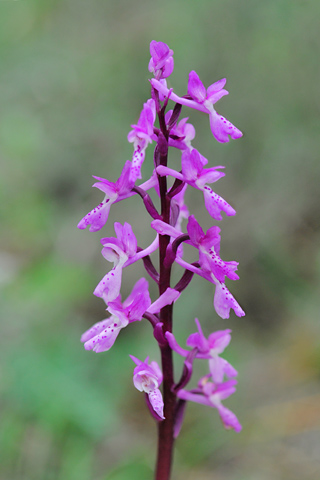 |
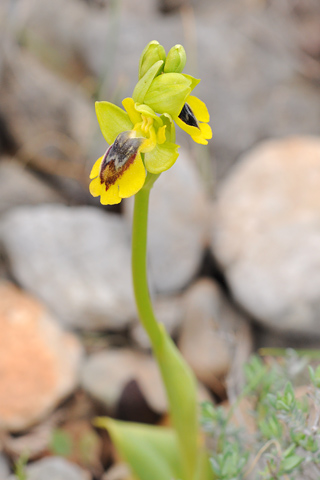 |
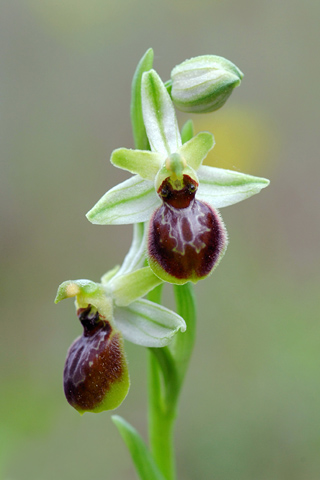 |
Near Carcassonne, the mountain of Alaric marks the northern limit of the Corbières. This east-west facing massif dominates the Aude plain which stretches out at its feet. It is covered with scrubland with Boxwood and Kermes Oak, as well as rocky lawns which form a favorable biotope for many wild orchids. It is especially the southern foothills that should be explored to find the most interesting species. From Monze to Camplong d'Aude passing through Fajac-en-Val, Arquettes-en-Val or Montlaur, the small roads offer many opportunities to observe them from early April to mid-May.
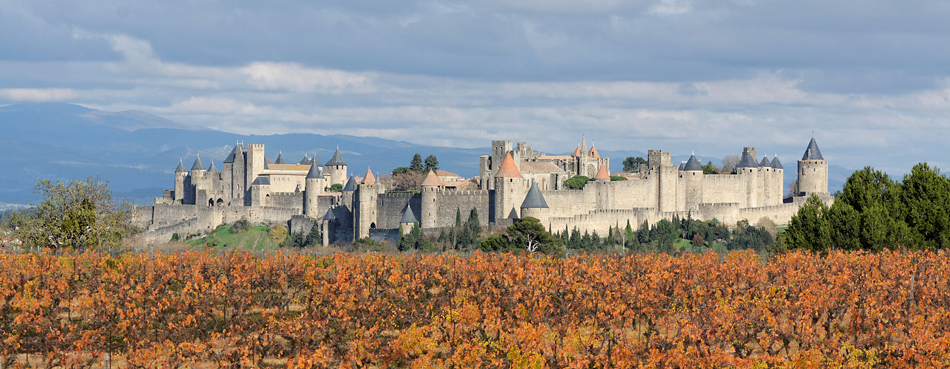
The medieval city fortress of Carcassonne
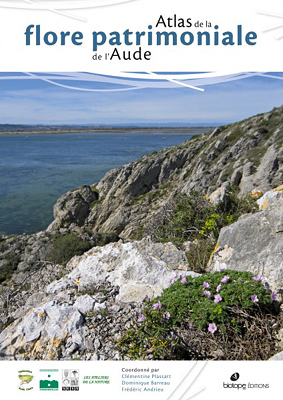 |
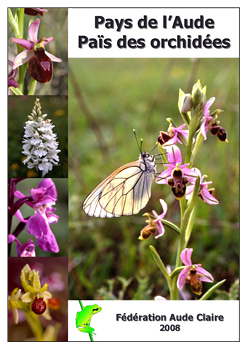 |
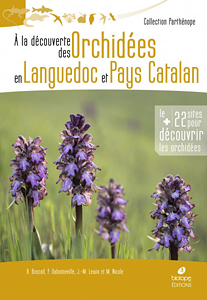 |
![]()
![]() Atlas de la flore patrimoniale de l'Aude. Ed. Biotope (2016). ISBN : 978-2-36662-187-7
Atlas de la flore patrimoniale de l'Aude. Ed. Biotope (2016). ISBN : 978-2-36662-187-7
![]()
![]() Pays de l'Aude, Païs des orchidées. pdf téléchargeable sur le site : http://www.pyreneesaudoises.com
Pays de l'Aude, Païs des orchidées. pdf téléchargeable sur le site : http://www.pyreneesaudoises.com
![]()
![]() A la découverte des Orchidées en Languedoc et Pays Catalan. R. Buscail, F. Dabonneville, J.M Lewin et M. Nicole. Biotope Editions (2019), ISBN: 978-2-36662-222-5
A la découverte des Orchidées en Languedoc et Pays Catalan. R. Buscail, F. Dabonneville, J.M Lewin et M. Nicole. Biotope Editions (2019), ISBN: 978-2-36662-222-5
![]()
![]() Fédération Aude Claire.https://www.audeclaire.org
Fédération Aude Claire.https://www.audeclaire.org
![]()
![]() http://paysages.languedoc-roussillon.developpement-durable.gouv.fr/Aude/organisation03.html
http://paysages.languedoc-roussillon.developpement-durable.gouv.fr/Aude/organisation03.html
![]()
![]() Cellier Saint-Damien à Talairan :
https://www.serres-mazard.com/
Cellier Saint-Damien à Talairan :
https://www.serres-mazard.com/